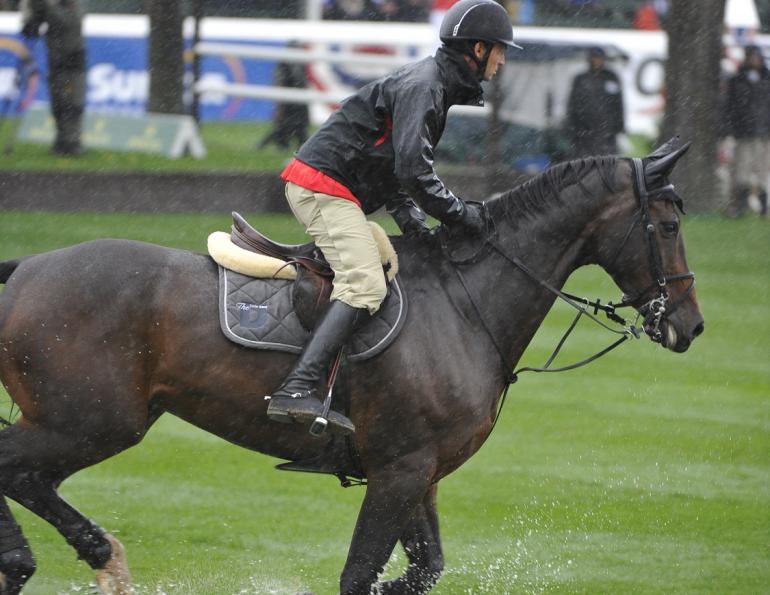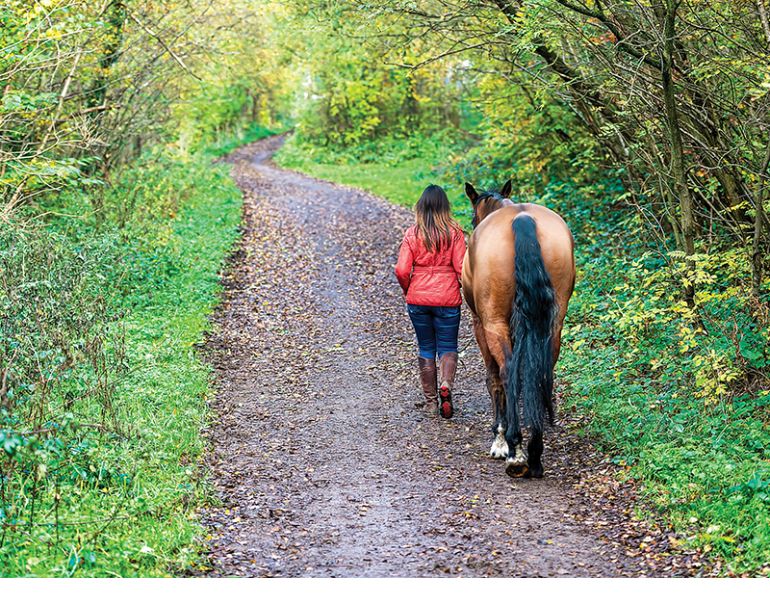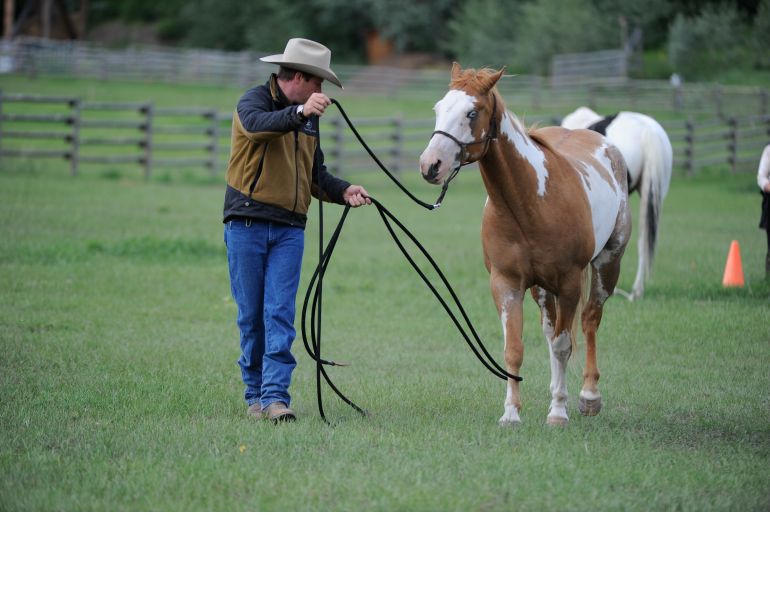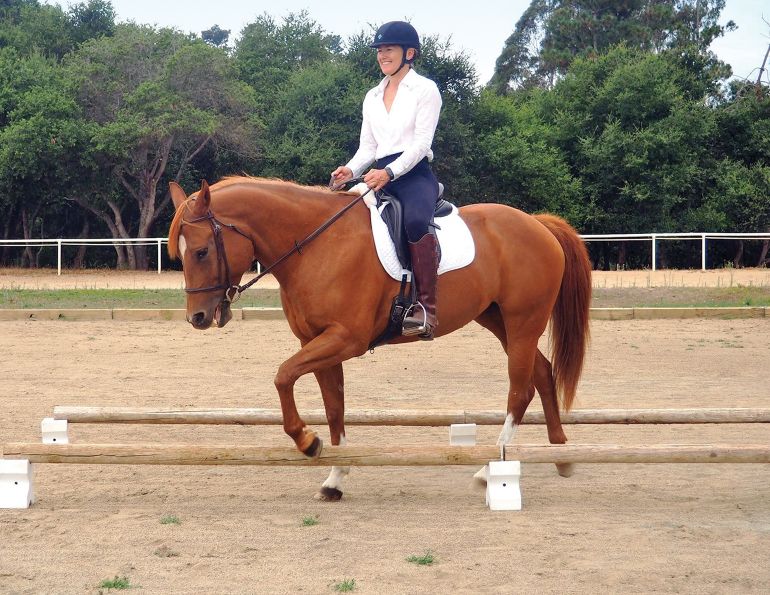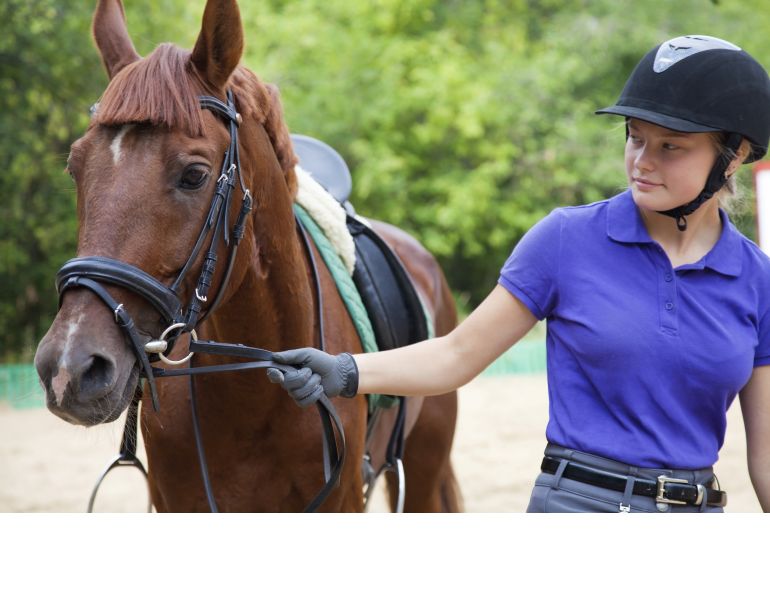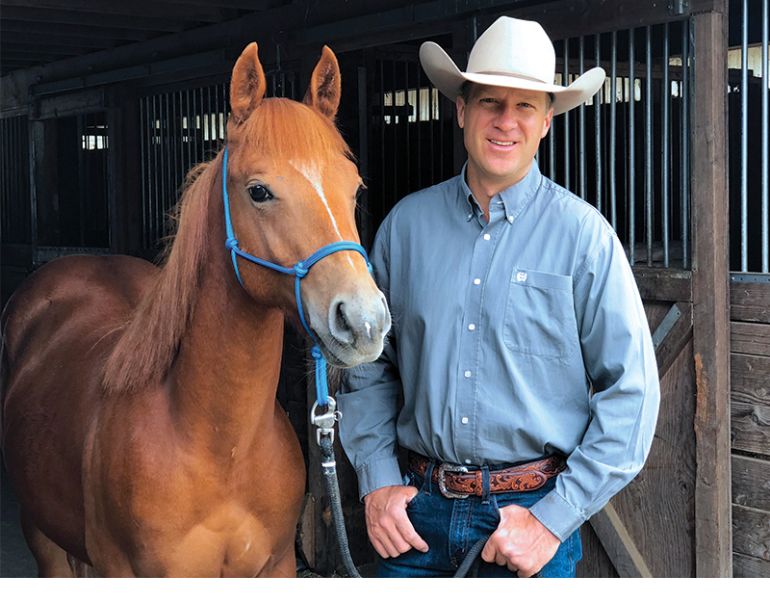By Jec A. Ballou
The disappointing news of fitness is that we cannot keep repeating the same thing to get results. After a while, we need to modify exercises in order to keep gaining conditioning adaptations from them. Otherwise, the body becomes so efficient and habituated at performing movements that it recruits fewer muscle fibres to do them and operates with less involvement from the nervous system. Movements become robotic, a state in which no conditioning gains occur.
The good news is that horses are sensitive creatures, and it does not require complexity to add novelty to their routines. This becomes particularly worth considering for exercises that are most beneficial when practiced frequently, such as baited stabilization exercises often fondly called carrot stretches.
First, let’s review what these movements accomplish and then discuss how to keep them working for us once they have initially helped. Several years ago, researchers studied carefully controlled groups of horses that received no other exercise for 16 weeks beyond baited stabilization maneuvres daily for three times per day. At the end of the study period, the horses’ deep spinal muscles had increased in size and strength by 20 percent. This finding gave compelling evidence to the efficacy of these simple moves for both rehab and performance horses alike. Their benefit comes from strength building rather than from making the horse highly stretchy as their name might imply.
In the study, horses were asked to stand still while following a bait (usually a piece of carrot) with their noses to different positions that required them to activate their core for balance. These included reaching around laterally towards their flanks and hind feet, down between their knees, chest, and forefeet, and extending their necks up towards the sky.
Related: Single Pole Exercises with Jec A. Ballou
These routines are low impact, quick to execute, and require no special skills. In other words, there is no reason to not do them. As you practice regularly, bear in mind that about every month you need to slightly alter the position and request of each maneuvre to prevent the horse from becoming robotic in his efforts. Below are my suggestions for simple and effective ways to add novelty to these exercises that are most beneficial when repeated at high frequency, yet run the risk of becoming robotic. For the sake of simplicity, this article assumes that most riders currently perform about three of these movements daily (one lateral bend/stretch around to each side, and one forward and rounding move of head-between-knees) rather than the whole gamut.
Low to High
If you have been practicing baited stabilization exercises by asking the horse to reach his head around towards his flank, the simplest modification is to raise the bait either higher or lower for the next few weeks. With most baited stretches, the horse can be asked to reach low (towards the outside of his hind or front fetlocks), neutral (straight back towards his stifle), or high (up towards his pelvis).
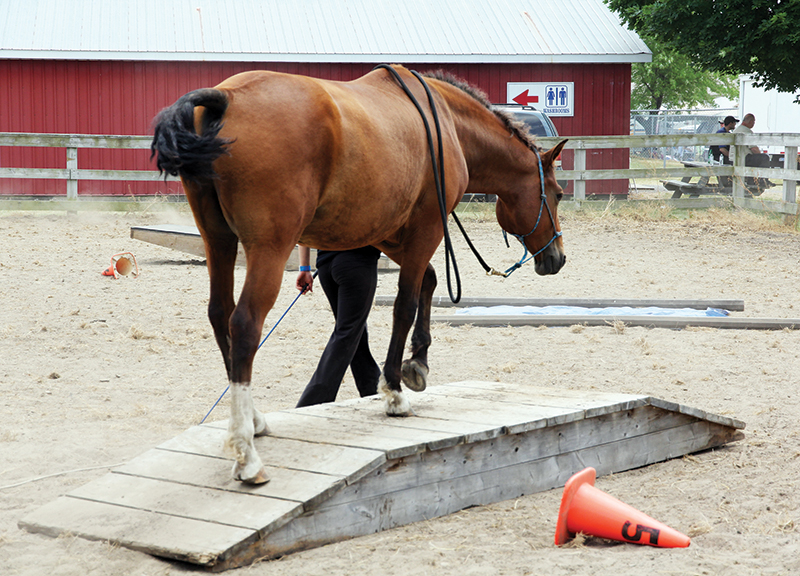
Provide variety by using different surfaces and by adding movements between stretches, such as walking over an obstacle, as each provides different stimulus. Photo: Shutterstock/Patricia Barker
Most of us settle on a position that seems to challenge our horse and continue to practice in that range. Once we have been doing this for a few weeks, though, we should leave that position alone and ask instead for one of the higher or lower positions.
For instance, I began by asking Diamante to reach his head around towards his flank for several weeks, and he made some improvement in his range of motion with that exercise. Tempted as I might have been to keep repeating this for the next several weeks, I then switched to ask him to reach around and down towards the outside of his front foot on each side. Some days I also asked him to reach down low towards his hind foot. I repeated these lower stretches for the next three weeks, after which we moved on to practice only higher stretches (reaching around and up high towards his pelvis) for the next period of time.
Add Movement
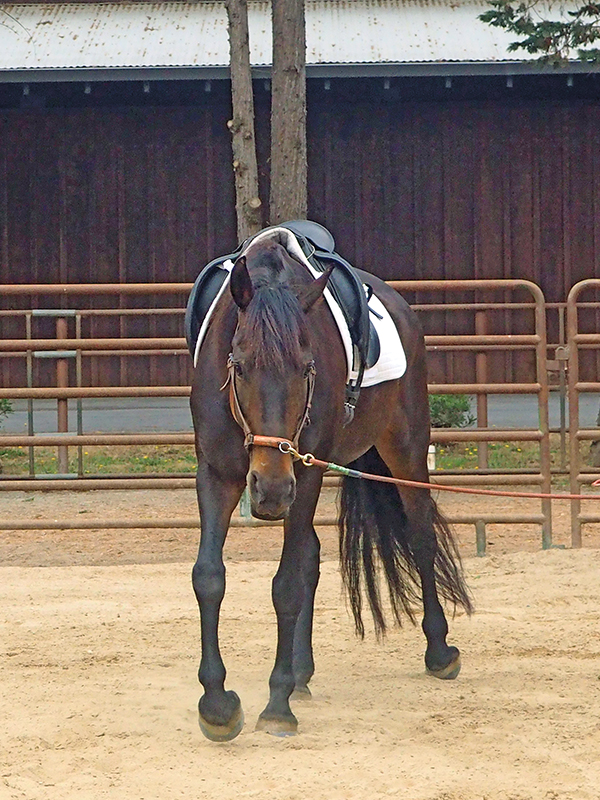
Adding forward movement between maneuvres helps to keep the horse mentally and physically engaged. Movement can be five to ten seconds of walking, walk-stop-walk transitions, or walking around or over an obstacle. Photo courtesy of Jec A. Ballou
Another simple modification is to add a little movement in between each maneuvre. This helps keep both mind and body more fully engaged. I recommend adding five to ten seconds of walking type exercise between each baited stretch. For instance, you might perform a baited stretch asking the horse to retrieve a carrot from between his knees, and then walk him backwards or forwards — or around you in a small circle — before repeating the between-the-knees maneuvre. Other suitable movements to intersperse between each stretch might include: turn on the forehand, turn on the haunches, walking around or over an obstacle, or a few walk-stop-walk transitions. Occasionally during a lunging session, I will ask the horse to stop every two minutes and perform a few baited stretches before resuming another two minutes of lunging. This is a good way to combine the benefits of core muscle conditioning with the mental stimulus of forward movement.
Try an Unstable Surface
For horses that are highly practiced with static maneuvres like baited stretches and physical therapy techniques, it often helps to introduce a different surface under their feet. This awakens the nervous system and can cause the horse to rearrange himself to find balance, which creates novel stimulus and adaptations - the goal of conditioning! Here is where a soft or slightly unstable surface helps. By placing foam pads or a mat under the horse, we introduce a new amount of instability during the baited stretches.

The unstable surface of a mat or foam pads adds novelty and challenge to the exercise by introducing new instability. Photos courtesy of Jec A. Ballou
In the photo, you can see me asking the mare Semele to stand on a foam mat while practicing our normal routine. During the first few days, Semela wobbled around quite a bit as she found her balance reaching for the bait. Soon enough, she found stability and ease. Once she began to find the routines on the mat very easy, it was my cue to then add more novelty. My options included the previous two modifications or changing her standing surface yet again. At my barn, we can choose from pavement, sand, rubber, grass, and pea gravel. Again, each surface offers different stimulus and therefore a chance to keep the nervous system participating fully in our conditioning tools.
Related: Building Stronger Horses with Jec A. Ballou
To read more by Jec Ballou on this site, click here.
Photo courtesy of Jec A. Ballou




